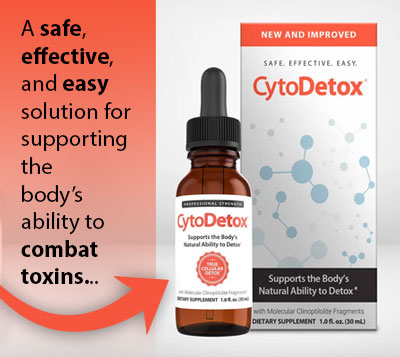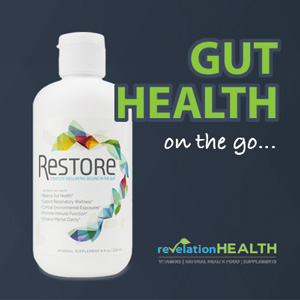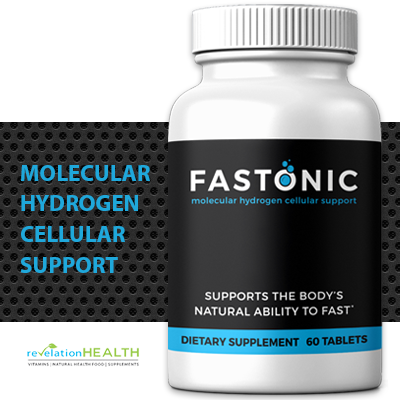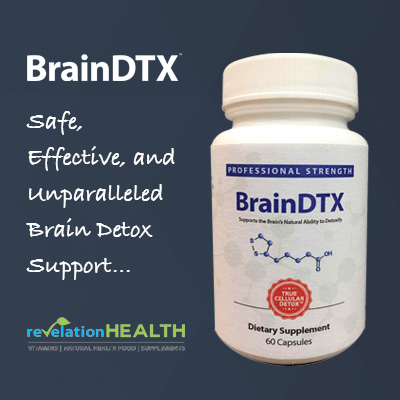Chocolate Health Benefits:
Chocolate – 6 Ways To Get The Health Benefits & Avoid The Detriments

Do you love chocolate? If yes, there are good reasons. But before jumping for joy …
Let’s be sure that what kind you eat can:
- Provide rich antioxidants
- Improve heart health
- Reduce high blood pressure
- Help Fight Cancer
- Maintain Optimal Blood Sugar (avoid insulin resistance)
- Lower LDL Cholesterol
- Improve Mood
- Supply phyto-iron & trace minerals
- Improve Brain Cognition
- Support skin and hair health
- Boost your immune system
- Help Prevent Strokes
- Help Prevent Preeclampsia
- Reduce Inflammation
- Support weight loss
- Reduce asthma
- Promote gut-probiotic species proliferation,
and avoid potential detriments:
- Heart palpitations
- Irritable Bowel flare-ups
- Osteoporosis
- Glaucoma
- Aggravate Bleeding Disorders
- Premature births
- Anxiety
- Diarrhea or Constipation
- Nervousness
- Dehydration
- Blood Sugar Disorders
More than a powerhouse of nutrients and mild aphrodisiac effects for St. Valentine’s Day, the cacao-chocolate story can empower us—not only to include some healthy chocolate in our diets but gain greater wisdom in evaluating the integrity of information.
Chocolate (Cacao) Therapy. Chocolate Health Benefits
Beyond being a functional food—one that provides benefits beyond supplying macro and micronutrients—cacao is a therapeutic herb. As such, it warrants applying a dose of “prudence and judgment” to gain the benefits and avoid the detriments.
Cacao, the bean pod from the Theobroma cacao tree, is chockablock full of health-supportive nutrients, but overuse can cause symptoms in susceptible people. On the flip-side, the chocolate that the kids get trick-or-treating is abjectly detrimental. Here, let’s discover some things about chocolate.
Chocolate Health Benefits: Tree Ripened.
Unlike tomatoes, avocados, bananas, and apples, cacao beans must be tree-ripened to develop the cocoa butter (beneficial fats) and sugars (required for fermentation). This means that chocolate starts with a mature, tree-ripened bean in all its natural glory.
Let’s step aside from our chocolate discussion and briefly delve into a critical issue.
Ethelene.
Sadly, other commercial foods brought to the supermarkets have been picked green—before Nature has matured the fruit on the tree/vine. They are forced-ripened with phytohormone, ethylene gas, which attempts to mimic natural ripening processes.
But, “It’s not nice to trick Mother Nature,” and the result is a nutritionally inferior less-tasty fruit.
The problem is: Nature works in a precise sequence of events to render the best nutrients.
Over the millennia, our cells evolved epigenetic behaviors for foods based on natural principles: organic, minimally-processed, tree/vine-ripened (in the season thereof). People enjoyed them at their tastiest, most nutritious, health-supportive phase.
For times when food was not available, humanity learned skills such as drying, fermenting, preserving with salt and herbs, storing in root cellars, freezing, and canning. Small sacrifices to the food quality to make it through the winter.
Nature’s standards are not being met with the “pick-green, force-ripen” method employed today. Many children today have no idea what a tree-ripened fruit tastes like.
Force ripening circumvents and sacrifices Nature’s processes for the sake of convenience, storage, and shipping.
This is obvious because organic garden tomatoes taste far better than grocery store tomatoes. A yard-tree orange, pear, or apple tastes so much better than commercial fruit, picked green, gas ripened, and shipped from a thousand miles away.
The fact of superior nutrition and taste with organic produce is a threat to the status quotient of big grocers and big corporations.
Remember when Michelle Obama got her hand slapped for starting an organic garden at the White House to help with the childhood obesity pandemic? Remember how the media classified people who know the food-health connection as “elitists?”
Chocolate Health Benefits: Ignorance—Not Bliss. Actually Deadly.
Makes you wonder about other disconnects such as: why do we have a food system that’s estranged from health, and a health-care system that’s estranged from food?
Ethelene gas applied to green-picked fruit causes the skin to ripen first as opposed to Nature’s method of ripening occurring from deep within. With force ripening, the produce’s sugars remain immature. It looks pleasant to the eye but does not taste its best. Thus, transportation, storage, and handling produce take a toll on nutrition and taste.
Beyond taste (our ancient sense for survival), food nutrition is a matter of phyto-genes meets human-genes—how cells respond to foods and nutrients. In the tree/vine-ripened food, many genes initiate cellular metabolic activities that are not duplicated by ethylene force-ripening.
Bag It.
The basis of putting unripe fruit in a brown paper bag is to expose the immature fruit to a higher concentration of its naturally-produced ethylene gas. Reciprocally, keep ripened fruit out of the bag, so it doesn’t concentrate ethylene and spoil.
Nature’s Best.
Organic, tree/vine-ripened food is superior in its nutrient molecule configurations (and flavor). Cacao passes this test.
Fermenting.
The cacao bean is very bitter. If you eat one, you’ll probably pucker and say, “Eewww.” Cacao beans must be self-fermented using their inherent sugars and yeasts. This takes a week and is Nature’s process. Cacao passes the natural fermentation test.
Magic Moment.
Right here is when the cacao bean is the most nutritious—raw, ripe, and fermented. From here, it’s all downhill because cacao is bitter. An herbal aphorism is, “The more bitter the herb, the better the medicine.”
For all the touted benefits discovered by Science in the raw cacao bean, just crack open the bean-shell and pop the inner nib in your mouth. It’s nutritious but not much fun. According to the Mayans and Aztecs, cacao might be spiritually enlightening.
Dry-Roasting.
After a week’s fermentation, the bean is roasted to prevent mold.
One of the numerous benefits of fire for humanity–in addition to security, safety, light, warmth, and expanding the viable food supply for bigger brains–is roasting the cacao bean. It reduces the extreme bitter taste. Couldn’t have s’mores without it.
While a necessary step to getting your chocolate, here is where degradation begins – processing, alteration, and adulteration. Some 60% of cacao’s beneficial polyphenols are destroyed by roasting.
But some foods require cooking. Case in point: beans, lima beans, and barbecue. Just like coffee, roasting the cacao bean helps make a commercially viable product with the classic bitter-chocolate flavor.
Processing: Baker’s Chocolate.
Now the bean’s shell is removed, and the inner nib is ground into an oily powder of cocoa solids and cocoa butter, which is called chocolate liquor. (Not to be confused with Kahlua the chocolate-flavored liqueur.) Now you have “Baker’s Chocolate.” The two components can also be separated into cocoa powder and cocoa butter.
Shenanigans Galore.
Next is where chocolate gets its bad rap. Manufacturers start creating the smooth, sweet chocolate product they hope you’ll crave and buy. They add emulsifiers, sugar, preservatives, and health-destroying partially-hydrogenated vegetable oils, fake-milk substitutes, artificial flavors, liqueurs, commercial milk (for milk chocolate), and stabilizers.
The ratios of milk, sugar, and other additives become the secret recipes that differentiate a Hershey bar from a Teuscher champagne truffle. But it’s due to all the processing that the innate health-power of chocolate is lost and harmful ingredients added make it undesirable for health.
Caveat Emptor: Chocolate Health Studies Are Very Misleading.
There are boocoodles of articles promoting the health benefits of chocolate. But you won’t get those benefits by eating M&M’s, Hershey Bars, or Count Chocula cereal. The studies are done on the cacao beans, not milk chocolate. There is a vast difference.
Cacao VS Cocoa
- Cacao is the bean. (The word is pronounced like you are imitating a crow’s call or stuttering on the word “cow.”) It has the beneficial fats. You can also get cacao butter, which is white and fatty, and you can get cacao powder, which is missing the best nutrition (the fat) and is what’s leftover after removing the cacao butter.
- Cocoa(pronounced like the name of a French Poodle or Ms. Chanel’s first name) is a processed powder that employs alkalizing chemicals to remove the acidic, bitter taste. The Dutch Chocolate process removes many of the valuable antioxidants and nutrients.
How To Get Healthy Chocolate.
Here’s a checklist to get the best benefits and avoid detriments of using the therapeutic herb, chocolate.
- Organic. Avoid pesticides and chemicals. Gain more nutrients.
- Raw. Raw cacao is further up the ladder than roasted. But roasted beans still provide benefits, and most products sold commercially are roasted.
- Cacao To The Max. Look for a high percentage of cacao cited on the label. It won’t have added milk solids.
- Dark Chocolate. Choose products that are at least 70% cacao. Dark chocolate products have no added milk solids and are simply cacao beans, sugar, and soy lecithin emulsifier, which is genetically-modified and herbicided with toxic glyphosate unless “organic” is specified.
- Avoid Sugar. Most bars will have sugar. Look for low sugar. Some use xylitol, an alcohol sugar, that has mixed Scientific reviews. Some studies cite that xylitol fights pathogenic bacteria. Other studies cite that xylitol chokes beneficial bacteria and upsets the microbiome.
- Super Chocolate. In the natural health world, there are some terrific raw, organic cacao cookies, brownies, and treats.
Chocolate is an example of a therapeutic herb like cannabis, coffee, tea, and tobacco. The health benefits are reserved for people who apply the Natural Health perspective and enjoy a little raw cacao or dark chocolate, keeping an eye on the sugar content.
Citations:
Dr. Shu-fei Lin, 2005, Profiling a method to study fruit maturation, tree-ripening, and the role of “tree ripening factor” in Gala and Fuji Apples.
Miller, et. al; Impact of Alkalization the Antioxidant and Flavanol Content of Commercial Cocoa Powers, J of Agriculture & Food Chemistry, 2008, 56, 8527–8533
Katz DL, Doughty K, Ali A. Cocoa and chocolate in human health and disease. Antioxid Redox Signal. 2011;15(10):2779–2811. doi:10.1089/ars.2010.3697
Esser, M. Mars, E. Oosterink, A. Stalmach, M. Muller, L. A. Afman. Dark chocolate consumption improves leukocyte adhesion factors and vascular function in overweight men. The FASEB Journal, 2013; 28 (3): 1464 DOI: 10.1096/fj.13-239384
Gertraud Maskarinec (2009) Cancer Protective Properties of Cocoa: A Review of the Epidemiologic Evidence, Nutrition and Cancer, 61:5, 573-579, DOI: 10.1080/01635580902825662
Martín MA, Goya L, Ramos S. Preventive Effects of Cocoa and Cocoa Antioxidants in Colon Cancer. Diseases. 2016;4(1):6. Published 2016 Jan 22. doi:10.3390/diseases4010006
Simon, S, Is Chocolate Good For You, American Cancer Society, 11-15-2019
T. Francis;K. Head;P. G. Morris;I. A. Macdonald; Effect of Flavanol-rich Cocoa on the fMRI Response to a Cognitive Task in Healthy Young People Journal of Cardiovascular Pharmacology. 47():S215-S220, JUNE 2006
PMID: 16794461
Loma Linda University Health. New Studies Show Dark Chocolate Consumption Reduces Stress and Inflammation While Improving Memory, Immunity and Mood, Apr. 2018
Pérez-Cano FJ, Massot-Cladera M, Franch A, Castellote C, Castell M. The effects of cocoa on the immune system. Front Pharmacol. 2013;4:71. Published 2013 Jun 4. doi:10.3389/fphar.2013.00071
Camps-Bossacoma M, Massot-Cladera M, Abril-Gil M, Franch A, Pérez-Cano FJ, Castell M. Cocoa Diet and Antibody Immune Response in Preclinical Studies. Front Nutr. 2017;4:28. Published 2017 Jun 27. doi:10.3389/fnut.2017.00028
Thea Magrone, Matteo Antonio Russo and Emilio Jirillo Cocoa and Dark Chocolate Polyphenols: From Biology to Clinical Applications Frontiers In Immunology, Jun, 2017
Shah SR, Alweis R, Najim NI, et al. Use of dark chocolate for diabetic patients: a review of the literature and current evidence. J Community Hosp Intern Med Perspect. 2017;7(4):218–221. Published 2017 Sep 19. doi:10.1080/20009666.2017.1361293
Lua PL and Wong SY, Dark Chocolate Consumption on Anxiety, Depression and Health Related Quality of Life of Patients with Cancer: A Randomised Clinical Investigation Centre for Clinical and Quality of Life Studies (CCQoLS), Faculty of Medicine and Health Sciences, Universiti Sultan ZainalAbidin (UniSZA), 20400 Kuala Terengganu, Malaysia
Williams, S Eating Chocolate Can Significantly Protect The Skin From UV Light, Journal of Cosmetic Dermatology, Vol 8, Is 3, 9-2009, Pg 169-173
Gordon, B RDN, LD, What is an Anti-Inflammatory Diet? Academy of Nutrition and Dietetics, May, 2019
Saftlas AF, Triche EW, Beydoun H, Bracken MB. Does chocolate intake during pregnancy reduce the risks of preeclampsia and gestational hypertension? Ann Epidemiol. 2010;20(8):584–591. doi:10.1016/j.annepidem.2010.05.010
Thorvardur R.Halfdanarson AminahJatoi Chocolate as a Cough Suppressant: Rationale and Justification for an Upcoming Clinical Trial https://doi.org/10.3816/SCT.2007.n.006
Franco R, Oñatibia-Astibia A, Martínez-Pinilla E. Health benefits of methylxanthines in cacao and chocolate. Nutrients. 2013;5(10):4159–4173. Published 2013 Oct 18. doi:10.3390/nu5104159
Farhat, G, Drummond, S, Fyle, L, Al-Dujalli, Dark Chocolate: An Obesity Paradox or a Culprit for Weight Gain, Phytotherapy Research, Vol 28, Is 6; doi.org/10.1002/ptr.5062
Eo. Afoakwa MPhil, PhD (2008) Cocoa and chocolate consumption – Are there aphrodisiac and other benefits for human health?, South African Journal of Clinical Nutrition, 21:3, 107-113, DOI: 10.1080/16070658.2008.11734163
Kendrick, M Scientific American, The Origin of Fruit Ripening: A gaseous plant hormone turns off anti-ripening genes, enabling fruit to mellow and taste good., Aug 17, 2009
Mercola, J How First Lady’s Organic Garden Became a Junk Food Campaign
Barański, M., Średnicka-Tober, D., Volakakis, N., Seal, C., Sanderson, R., Stewart, G., . . . Leifert, C. (2014). Higher antioxidant and lower cadmium concentrations and lower incidence of pesticide residues in organically grown crops: A systematic literature review and meta-analyses. British Journal of Nutrition,112(5), 794-811. doi:10.1017/S0007114514001366
Dotinga, R Organic Foods May Be Healthier, Review Finds, MedicineNet, Jul 15, 2014 HealthDay News
Myers JP, Antoniou MN, Blumberg B, et al. Concerns over use of glyphosate-based herbicides and risks associated with exposures: a consensus statement. Environ Health. 2016;15:19. Published 2016 Feb 17. doi:10.1186/s12940-016-0117-0









4 Comments
Leave your reply.